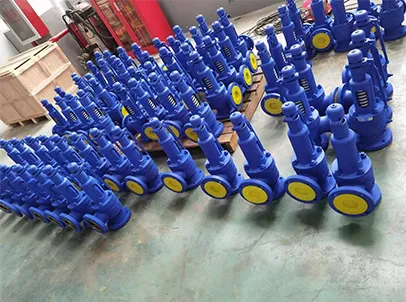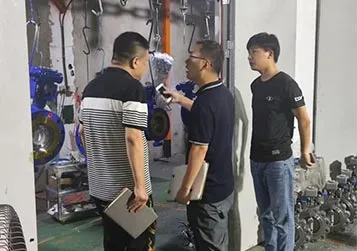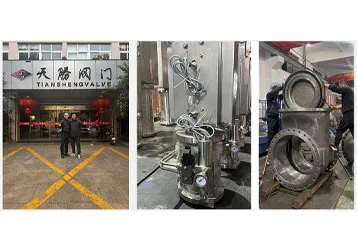- Email:info@tsv-valve.com

 Nov 05,2025
Nov 05,2025In any fluid system—from home water pipes to industrial oil lines—controlling flow direction is non-negotiable. A check valve (also called a non-return or one-way valve) is a simple, passive device that solves this problem: it lets fluid (liquid, gas, or steam) flow in one direction only, automatically blocking reverse flow. No manual operation, no electricity—just reliable protection against backflow damage like pipe leaks, equipment failure, or contamination.
At its simplest, a check valve has three key parts: a flow path (for fluid to pass through), a movable closure (like a disc, ball, or flap), and a seat (the surface the closure seals against). Its only job is to enforce “one-way traffic” for fluids, fixing three critical issues:
Prevent backflow: Stops contaminated fluid from re-entering clean supplies (e.g., dirty water getting into a home’s cold water line) or fluid from flowing backward into pumps.
Protect equipment: Avoids damage from reverse flow (e.g., a pump’s impeller can break if fluid spins it the wrong way).
Maintain pressure: Keeps system pressure stable (e.g., a check valve in a water heater stops hot water from siphoning back into cold lines).
Unlike control valves (which adjust flow rate) or gate valves (which fully open/close), check valves work on autopilot—driven entirely by fluid pressure.
Thread/ Socket End NPT/BSPT Swing Check Valve
Check valves rely on pressure differences to open and close. No buttons, no motors—just fluid pressure doing the work. Here’s a step-by-step breakdown (using a common swing check valve as an example):
When fluid flows in the desired direction, its pressure (called “forward pressure”) pushes the closure element (e.g., a swing disc) away from the seat. This opens the flow path, letting fluid pass through easily. The minimum pressure needed to open the valve (called “cracking pressure”) is low (usually 0.5–5 psi for water systems) so it doesn’t slow normal flow.
When forward flow stops (e.g., a pump shuts off) or reverse pressure builds (e.g., backpressure from a full tank), fluid starts to flow backward. This reverse pressure pushes the closure element back against the seat, sealing the flow path tightly. No fluid can pass until forward pressure builds up again.
To avoid leaks, most check valves use soft seats (rubber, EPDM, or PTFE) that conform to the closure element. Guides keep the closure aligned with the seat—critical for high-pressure systems.
Check valves come in designs tailored to different fluids, pressures, and pipe sizes. Here are the three most widely used types:
Structure: A hinged “swing disc” that opens/closes like a door (no spring—relies on pressure and gravity).
Best for: Low-to-medium pressure systems (home water lines, HVAC, wastewater pipes) with large pipes (2–24 inches).
Pros: Low flow resistance, cheap, easy to maintain.
Cons: Slow to close (can cause water hammer in fast-flow systems), not for vertical pipes.
Structure: A small plastic/metal ball held against a seat by a spring.
Best for: Low-flow, small-pipe systems (medical devices, fuel lines, small water pumps) with pipes 0.1–2 inches.
Pros: Tiny, works in any orientation (vertical/horizontal), fast to close.
Cons: Clogs easily with debris (not for dirty fluids like wastewater).
Structure: A cylindrical “lift plug” that moves up/down along a guide (often spring-loaded for speed).
Best for: High-pressure, high-temperature systems (steam lines, oil refineries, power plants) with small-to-medium pipes (0.5–6 inches).
Pros: Tight seal, fast closing (reduces water hammer), works in vertical pipes.
Cons: Higher flow resistance, more expensive.
Check valves are everywhere—here are their most common uses:
Pick a check valve by focusing on three factors:
Fluid type: Use ball check valves for clean fluids (water, fuel); avoid them for dirty fluids (wastewater—choose swing or duckbill valves).
Pressure/temperature: Lift check valves for high pressure/heat (steam); swing valves for low-to-medium.
Pipe orientation: Ball or lift valves for vertical pipes; swing valves only for horizontal.
Check valves are the “unsung heroes” of fluid systems—simple, reliable, and essential for preventing damage. Whether you’re fixing a home water line or designing an industrial pipeline, understanding how they work (pressure-driven, one-way flow) and choosing the right type (swing, ball, lift) ensures your system runs safely and efficiently.
If you’re unsure which check valve fits your needs—from small medical-grade ball valves to large industrial swing valves—reach out for personalized guidance to match your fluid type, pressure, and pipe size.
Related News




GET A QUOTE
Talk to Our Expert